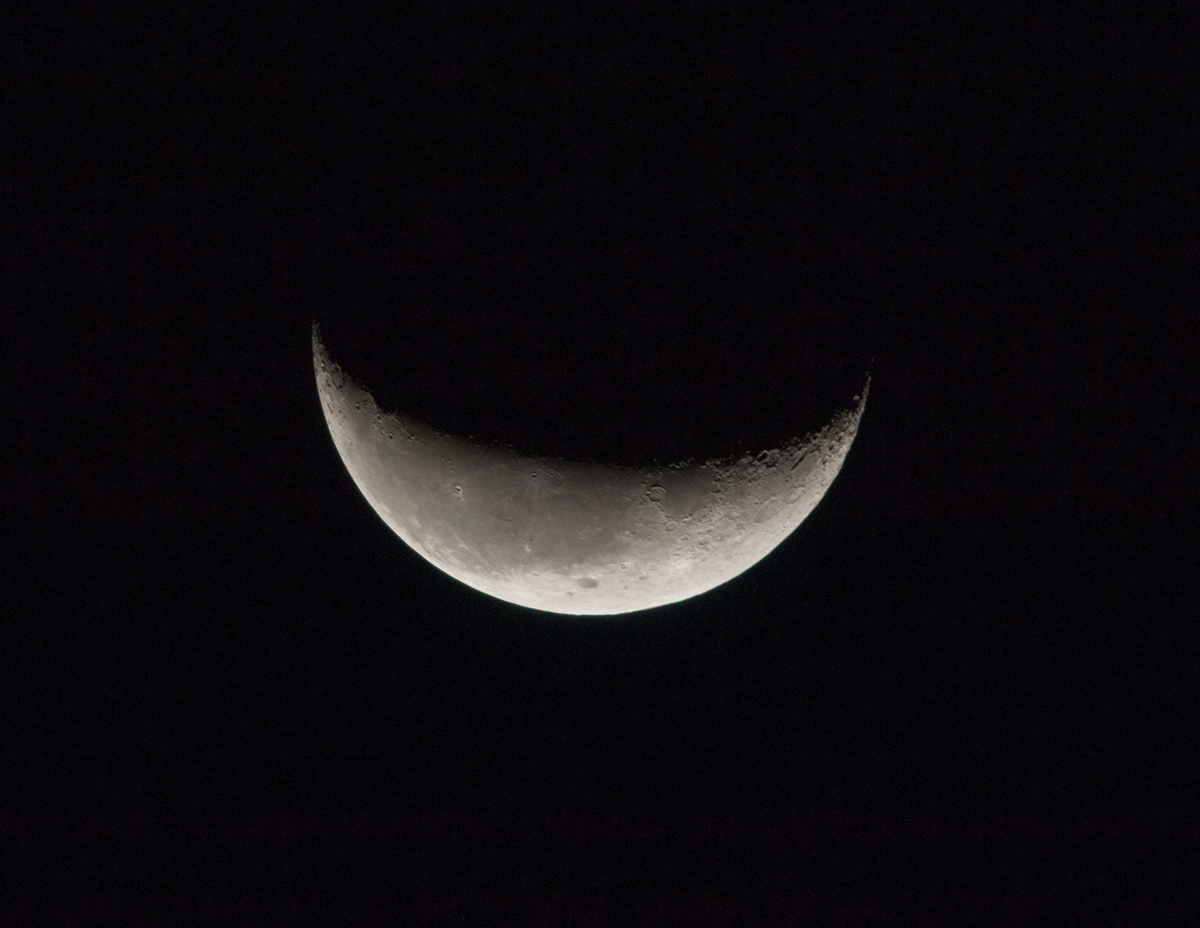
For expert skywatchers as well as those who are just beginning, the moon is an ever-alluring target.
When is the best time to observe the moon with a telescope?
Most astronomy neophytes might say the best time is when the moon is at full phase, but that's probably the worst time. When the moon is full, it tends to be dazzlingly bright as well as flat and one-dimensional in appearance.
In contrast, the interval when the moon is at or just past first quarter phase, or at or just before last quarter phase, is when we get the best views of the lunar landscape right along the sunrise-sunset line, or terminator. (The terminator can also be defined as that variable line between the illuminated portion and the part of the moon in shadow.)
Along with the fact that a half moon offers more viewing comfort to the eye than a full moon does, using a telescope with just small optical power (magnifications of 20- to 40-power) or even good binoculars allows us to see a wealth of detail on the surface. Around those times when the moon is half-lit or in its gibbous phase, those features lying close to the terminator stand out in sharp, clear relief. [Photos: Full Moon Captivates Skywatchers in February 2012]
Next chance
The moon next arrives at first quarter phase on Leap Day: Wednesday (Feb. 29) at 8:21 p.m. EST. That will be the moment when its disk is exactly 50 percent illuminated. Lunar mountains will be visible as the sun lights them from the right.
Get the Space.com Newsletter
Breaking space news, the latest updates on rocket launches, skywatching events and more!
How does the moon's brightness compare now with full phase? Most would probably think it's half as bright, but in reality astronomers tell us that the first quarter moon is only one-eleventh as bright as full. This is due to the fact that a half moon is heavily shadowed, even on its illuminated half. And believe it or not, it isn't until just 2.4 days before full that the moon actually becomes half as bright as full.
In contrast to a half moon, a full moon is almost completely illuminated, especially right around its center, where the sun shines straight down into all the microscopic crevices. Except for perhaps around the moon's immediate edges, you will find no shadows at all.
Artistic representations
Have you ever noticed that when artists portray the moon, they seem to show it as either a slender crescent or full? Half moons are shown far less frequently, while gibbous moons are rarely depicted at all. The word "gibbous" is derived from the Latin word gibbus, meaning "hump." An unusual word to be sure, but in describing the moon between half and full, it's the correct term.
Yet interestingly, the gibbous moon is the most-seen phase, occurring for the half month between first and last quarter. (For many, it will look "full" for the two or three nights around the time of full moon.)
Because it is in the sky for more than half the night, we're more apt to see the gibbous moon. In fact, it is even visible during the daytime hours, as will be the case during this upcoming week in mid- or late afternoon.
In contrast, the oft-pictured crescent moon is visible only during the early evening or early morning, and sometimes only briefly.
Joe Rao serves as an instructor and guest lecturer at New York's Hayden Planetarium. He writes about astronomy for The New York Times and other publications, and he is also an on-camera meteorologist for News 12 Westchester, New York.
Join our Space Forums to keep talking space on the latest missions, night sky and more! And if you have a news tip, correction or comment, let us know at: community@space.com.

Joe Rao is Space.com's skywatching columnist, as well as a veteran meteorologist and eclipse chaser who also serves as an instructor and guest lecturer at New York's Hayden Planetarium. He writes about astronomy for Natural History magazine, Sky & Telescope and other publications. Joe is an 8-time Emmy-nominated meteorologist who served the Putnam Valley region of New York for over 21 years. You can find him on Twitter and YouTube tracking lunar and solar eclipses, meteor showers and more. To find out Joe's latest project, visit him on Twitter.









